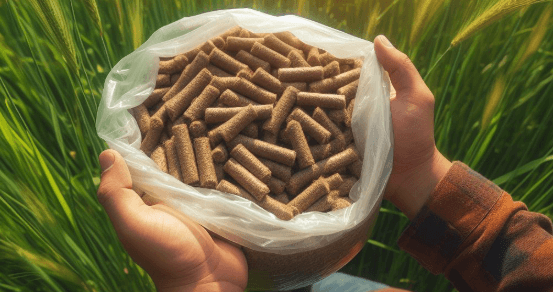


Napier grass (also known as Elephant grass) is rapidly gaining recognition as a valuable raw material for biomass pellet production due to its fast growth rate, high biomass yield, and renewability. However, one of the biggest challenges in processing Napier grass is its high natural moisture content, which typically ranges between 70–75%.
To convert Napier grass into fuel-grade biomass pellets, or use it in biogas plants, organic composting, or animal feed preparation, it’s essential to reduce this moisture to below 15%. At FABON Engineering, we offer an advanced Napier Grass Dewatering and Drying System that minimizes energy consumption while optimizing moisture control at every stage.
Traditional thermal drying methods alone are slow, energy-intensive, and expensive. Dewatering, as a pre-drying step, plays a critical role in reducing these inefficiencies.
Our screw press dewatering machine effectively removes free water content, reducing moisture from 72% to 45–50% mechanically—before any heat-based drying is applied. This step dramatically cuts down on thermal energy required later, improving overall process economics and making operations more sustainable.
Producing high-quality biomass pellets from Napier grass requires a multi-stage moisture reduction approach. Here’s how the process works:
This optimized drying process ensures that Napier grass is processed efficiently for downstream pelletizing, biogas production, or other industrial uses.
FABON’s Napier Grass Dewatering Machine is engineered for reliable, high-efficiency operation, tailored for continuous industrial use. It utilizes a mechanical screw press system—available in single or twin-screw configurations with variable pitch to accommodate different feedstock volumes.
Constructed using a robust mild steel frame, the machine can also feature Stainless Steel 304 contact parts for corrosion resistance and hygienic processing. The dewatering screw, made of SS 304 or SS 316, is built for durability and long service life.
The machine length varies from 2500 mm to 5000 mm, depending on capacity needs, and supports continuous discharge via an outlet chute. Control is handled through a VFD-enabled control panel with overload protection, ensuring consistent torque and safe operation. A gearbox-driven drive system provides dependable mechanical power, and the design allows for easy access and minimal maintenance.
Whether you’re running a biomass pellet plant, biogas facility, or organic waste management system, FABON Engineering provides end-to-end solutions for Napier grass processing.
📞 Contact us today for customized solutions tailored to your production requirements.
🌐 Visit us at: www.fabon.in
📧 Email: sales@fabon.in
WhatsApp us